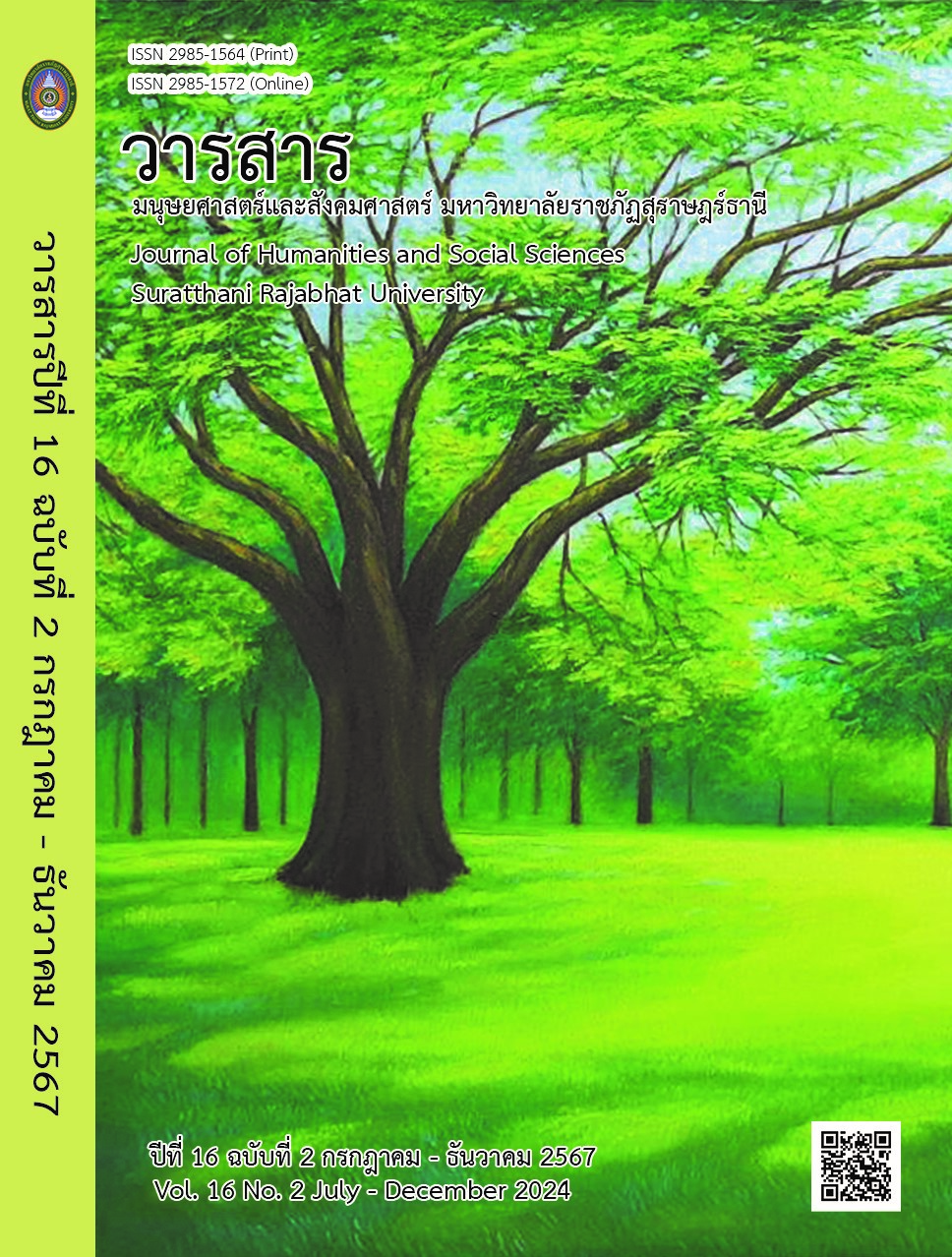Artistic Research in Music: The Composition of “400 Stab Wounds” in Slamming Brutal Death Metal
Main Article Content
Abstract
This research aimed to create a composition in the style of slamming brutal death metal inspired by horror films and violence. It pushes the boundaries of sound creation by utilizing sound design, foley, and ambient techniques. The methodology employed creative research in the field of music. Innovative tools include digital audio workstations, interfaces, VST plugins, and video editing software. The creative process began with designing the rhythmic structure for guitar riff performances, composing music in detail, and video editing performances.
The research findings revealed that the "400 Stab Wounds" composition lasted 3.48 minutes—the main melody was based on symmetrical, Phrygian dominant, and altered scales. The composition employed a multimeter and incorporated continuous rhythmic changes throughout the piece. The composition developed guitar riffs and melodies to convey intense, fast, heavy, and breakthrough emotions typical of slamming brutal death metal. Additionally, this composition employed sound design, foley, and ambient techniques, adapting environmental sounds to imitate drum sets, body hitting, bone breaks, and horror film sounds, which aligned with the visual and thematic elements of slamming brutal death metal. The findings presented significant ideas for manipulating sound through sound design, foley, and ambient sound techniques. When integrated appropriately with brutal death metal music elements, these techniques effectively convey an engaging auditory horror experience. Moreover, this approach can be utilized in the composition of media intended to evoke analogous emotional responses.
Article Details

This work is licensed under a Creative Commons Attribution-NonCommercial-NoDerivatives 4.0 International License.
All published manuscripts have been verified by peer-peer professors in the fields of humanities and social sciences. Reprinting of the article must be authorized by the editorial staff.


